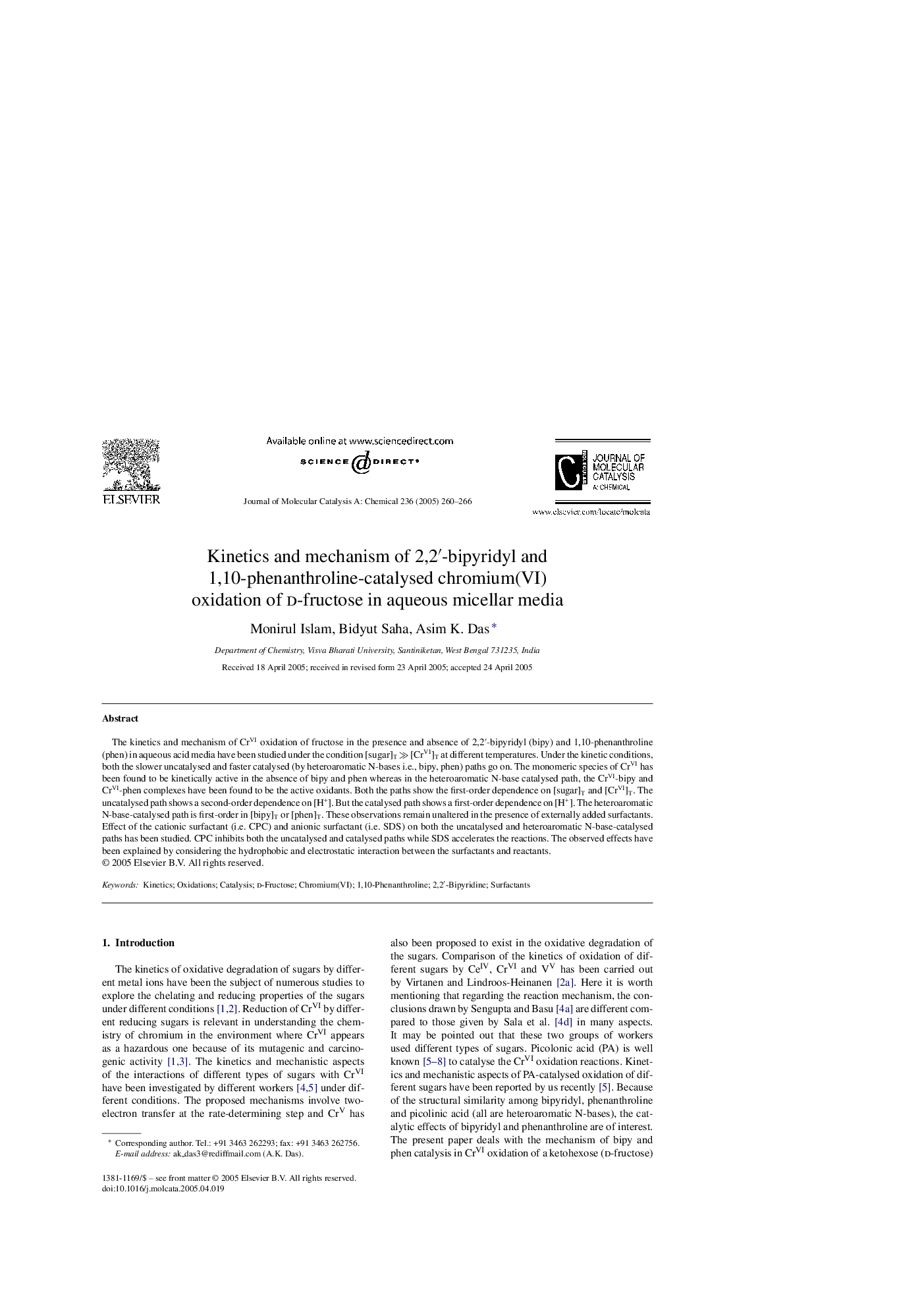| Article ID | Journal | Published Year | Pages | File Type |
|---|---|---|---|---|
| 9614627 | Journal of Molecular Catalysis A: Chemical | 2005 | 7 Pages |
Abstract
The kinetics and mechanism of CrVI oxidation of fructose in the presence and absence of 2,2â²-bipyridyl (bipy) and 1,10-phenanthroline (phen) in aqueous acid media have been studied under the condition [sugar]TÂ â«Â [CrVI]T at different temperatures. Under the kinetic conditions, both the slower uncatalysed and faster catalysed (by heteroaromatic N-bases i.e., bipy, phen) paths go on. The monomeric species of CrVI has been found to be kinetically active in the absence of bipy and phen whereas in the heteroaromatic N-base catalysed path, the CrVI-bipy and CrVI-phen complexes have been found to be the active oxidants. Both the paths show the first-order dependence on [sugar]T and [CrVI]T. The uncatalysed path shows a second-order dependence on [H+]. But the catalysed path shows a first-order dependence on [H+]. The heteroaromatic N-base-catalysed path is first-order in [bipy]T or [phen]T. These observations remain unaltered in the presence of externally added surfactants. Effect of the cationic surfactant (i.e. CPC) and anionic surfactant (i.e. SDS) on both the uncatalysed and heteroaromatic N-base-catalysed paths has been studied. CPC inhibits both the uncatalysed and catalysed paths while SDS accelerates the reactions. The observed effects have been explained by considering the hydrophobic and electrostatic interaction between the surfactants and reactants.
Keywords
Related Topics
Physical Sciences and Engineering
Chemical Engineering
Catalysis
Authors
Monirul Islam, Bidyut Saha, Asim K. Das,
